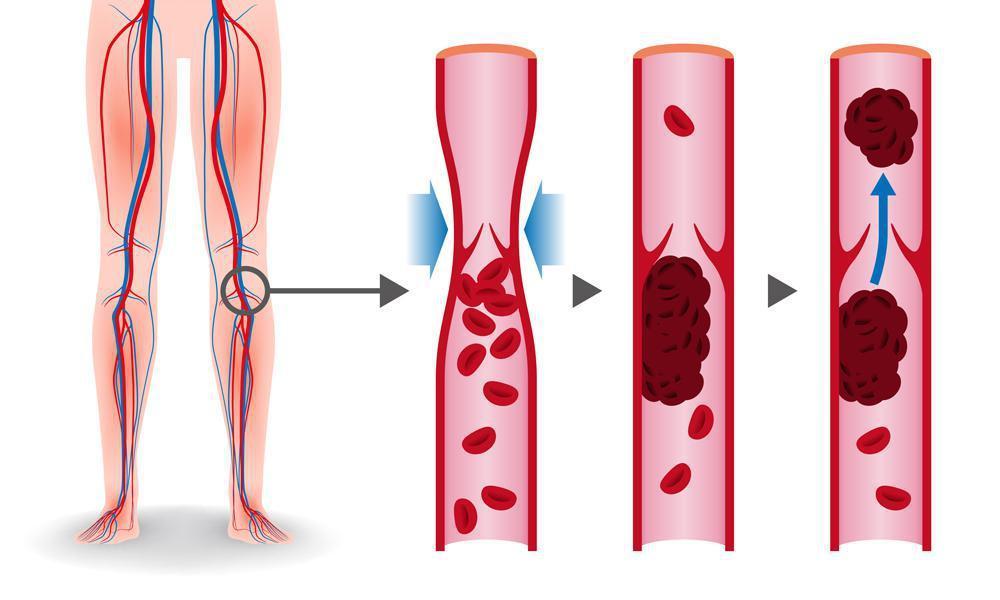How to Recognize the Early Signs of DVT

introduction
Deep Vein Thrombosis, or DVT, is a serious medical condition that can develop silently but escalate quickly if not treated on time. It occurs when a blood clot forms in a deep vein, most commonly in the legs. Recognizing the early signs of DVT can make all the difference in preventing life-threatening complications like pulmonary embolism.
In this article, we’ll guide you through everything you need to know about the signs, symptoms, causes, and prevention of DVT. We’ll also answer frequently asked questions and help you understand when to consult a healthcare professional.
What Is Deep Vein Thrombosis (DVT)?
Deep Vein Thrombosis is a condition where a blood clot (thrombus) forms in one or more of the deep veins in your body, usually in your legs. It can cause leg pain or swelling, but it can also occur without noticeable symptoms. DVT is dangerous because blood clots in your veins can break loose, travel through your bloodstream, and lodge in your lungs, blocking blood flow—a complication known as pulmonary embolism (PE).
Why It’s Important to Know the Signs of DVT
Unlike many other medical conditions, DVT doesn’t always announce itself loudly. It can begin with subtle symptoms that are easy to ignore or confuse with other issues like muscle cramps or fatigue. That’s why it’s essential to understand the signs of DVT and not dismiss them as minor problems.
Catching DVT early can help prevent serious complications and save lives.
Common Signs of DVT
Let’s take a closer look at the typical symptoms that might signal the presence of a blood clot in a deep vein:
1. Swelling in One Leg
Swelling is one of the most common early signs of DVT. It usually affects one leg (rarely both) and often starts in the calf or thigh. The swelling might appear suddenly and can get worse over time.
2. Leg Pain or Tenderness
Pain that starts in the calf and feels like a cramp or soreness is a common DVT symptom. The discomfort may worsen when walking or standing for long periods. This tenderness is usually located in the same area as the blood clot.
3. Warmth in the Affected Leg
A leg that feels warmer than the other could be a sign of increased blood flow or inflammation due to a clot.
4. Red or Discolored Skin
The skin over the affected area might turn red or develop a bluish tinge. This discoloration often accompanies swelling or pain.
5. Visible Veins or Vein Hardening
Sometimes, veins near the surface may appear more prominent, swollen, or feel hard to the touch. This may suggest a clot deeper in the vein.
6. A Heaviness or Fatigued Feeling in the Leg
People with DVT often report that their leg feels “heavy” or fatigued, even with minimal movement.
Less Common but Serious Symptoms
If a blood clot travels to the lungs, it can cause a pulmonary embolism—a medical emergency. Watch for these warning signs:
- Sudden shortness of breath
- Chest pain that worsens with deep breathing or coughing
- Rapid heartbeat
- Coughing up blood
- Dizziness or fainting
Seek immediate emergency care if you notice any of the above.
What Causes DVT?
Several risk factors contribute to the formation of blood clots in deep veins:
- Prolonged immobility: Long flights or bed rest can reduce blood circulation in the legs.
- Injury to a vein: Surgery or trauma can damage veins and increase clotting risk.
- Medical conditions: Cancer, heart disease, or clotting disorders may raise your chances.
- Pregnancy: Increases pressure in the pelvis and legs.
- Age: Risk increases with age, especially after 60.
- Obesity: Excess weight puts added pressure on leg veins.
- Smoking: Affects blood clotting and circulation.
- Birth control pills or hormone therapy: These can increase clotting factors in the blood.
Who Is at Risk of DVT?
You may be at higher risk if:
- You have a family history of DVT or blood clots
- You’ve had recent surgery or injury
- You’re pregnant or just gave birth
- You have cancer or are undergoing chemotherapy
- You’re inactive for extended periods (e.g., long travel or hospital stays)
- You’re over 60
- You smoke regularly
If you fall into any of these categories, it’s vital to stay alert to the signs of DVT.
How Is DVT Diagnosed?
If you or your doctor suspect DVT, the diagnostic process may include:
- Ultrasound Scan: The most common method to detect blood clots.
- D-dimer Test: A blood test that measures clot-dissolving substance levels.
- Venography: An X-ray test with contrast dye (less common but accurate).
- MRI or CT scans: Occasionally used for more complex cases.
Early diagnosis is key to avoiding complications, so don’t hesitate to seek testing if you’re concerned.
DVT Treatment Options
Once diagnosed, treatment typically involves:
- Anticoagulant Medications: Blood thinners like heparin or warfarin help prevent clot growth.
- Thrombolytic Therapy: In severe cases, clot-busting drugs may be used.
- Compression Stockings: These help reduce leg swelling and prevent further clots.
- Lifestyle Changes: Exercise, hydration, and smoking cessation can significantly improve outcomes.
Always consult with a vascular specialist or DVT expert for proper treatment guidance. FlowCare’s specialists offer expert support and customized care plans.
Can You Prevent DVT?
Yes. Here are some tips to reduce your risk:
- Stay active; avoid sitting or lying down for long periods
- Stretch your legs during long trips
- Drink plenty of fluids
- Wear compression stockings if advised
- Quit smoking
- Manage underlying conditions like diabetes or hypertension
- Take blood thinners if prescribed after surgery
Prevention starts with awareness, and understanding the early signs of DVT plays a big role in reducing risk.
FAQs About Signs of DVT
Q1. Can DVT go away on its own?
In rare cases, small clots may resolve on their own, but it’s risky to wait. Untreated DVT can lead to pulmonary embolism.
Q2. How long can you have DVT without knowing?
Some people may have DVT for days or even weeks with mild or no symptoms. However, it’s still dangerous, and early diagnosis is critical.
Q3. Are leg cramps at night a sign of DVT?
Not always, but persistent cramping, especially in one leg with swelling or redness, may be a warning sign.
Q4. Does walking help with DVT?
Yes, gentle walking improves circulation. But consult a doctor before increasing activity if you suspect DVT.
Q5. Is DVT life-threatening?
Yes, especially if it leads to a pulmonary embolism. Immediate treatment can prevent serious outcomes.
Conclusion
Deep Vein Thrombosis is more common than many people realize, and it often starts without major warning signs. Learning to recognize the signs of DVT—such as swelling, leg pain, discoloration, and warmth—can help you take timely action.
Whether you’re at risk due to lifestyle, age, or medical conditions, staying informed is your best defense. If you notice any symptoms, don’t ignore them. Speak with a vascular health expert at FlowCare and get the care you need before complications arise.


